
Interesting Graph - RIPE DB Objects
• 1 min read
This graph shows how the number of various RIPE Database objects evolved over time, in particular domain, intenum, route and aut_num objects.

Articles
Likes on articles

For many years I have been the leader of the Research and Development team at the RIPE NCC leading a dedicated team of thinkers to support the RIPE community by providing network research, data analysis and prototype tool development and services including RIPE Atlas and RIPEstat. As of 2023, I'm working as a principal engineer in order to assist the CTO and the RIPE NCC's information services.

• 1 min read
This graph shows how the number of various RIPE Database objects evolved over time, in particular domain, intenum, route and aut_num objects.

• 1 min read
This graph shows the number of IPv6 allocations received since 2007 when the RIPE NCC started to allocate IPv6 address space.

• 1 min read
Related to a thread on the NANOG mailing list about "BGP hijack from 23724 -> 4134 China?", we checked if any of those prefixes originated in the RIPE NCC service region.

• 5 min read
On 30 January 2010 the RIR system reached a small milestone: on this day APNIC has surpassed the RIPE NCC in terms of total allocated/assigned IPv4 address space, as seen in the RIR stats files. On this occasion we decided to look a bit into how IPv4 allocation/assignment rates changed over the las…

• 3 min read
After the Resource Explainer REX has been available for four weeks, we looked at the usage statistics collected by the tool to get a better ide how useful this tool could be for the wider community.

• 3 min read
While walking around the hallways at RIPE59, a couple of people asked me how the movies were made, what tools did I use and such. So here's a short summary on what I did to produce these movies.


• 4 min read
The current version (v0.1) knows only about IPv4 address space. We went for the most difficult part first. ASNs and IPv6 address space will follow (please note the follow-up articles below describing additional functionality about the Resource Explainer).

• 4 min read
INRDB is a non-conventional database hosting many different, number resource related data sets.

• 3 min read
Let us show you the RIR assigned and allocated IPv4 space, and some indication on how that's routed in the Internet. Get out the popcorn! Satisfaction guaranteed!

• 7 min read
With a limited supply of hardware probes and thousands of networks yet to be covered, how do we prioritise the applications to host probes? In this article, we explain our hardware probe distribution strategy to improve RIPE Atlas’s global coverage.
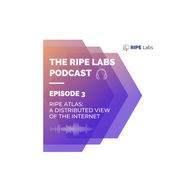
• 2 min read
Twelve years ago the RIPE NCC set out to build the largest Internet measurement network ever made. Today, RIPE Atlas provides users with an unprecedented understanding of the state of the Internet in real time. In this episode, I catch up with Robert Kisteleki to talk about how RIPE Atlas developed…

• 6 min read
When it comes to RIPE Atlas, bigger is better. Each new probe adds another vantage point, bringing the measurement platform closer to its goal of providing an unprecedented view of the state of the Internet. But expansion into new geographical locations and networks wouldn't be possible without the…
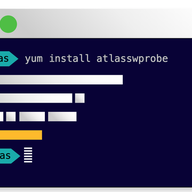
• 5 min read
Software probes provide yet another way to help grow the RIPE Atlas network. As many new hosts opt for this alternative, getting RIPE Atlas into new places means helping people install and run the relevant software packages. Language support will be key to this, and we have a plan to provide it, bu…

• 6 min read
This year's Internet Measurement Conference (IMC) was held in London from 1 - 3 November. In this article we highlight some of the presented work that we think is interesting and that the RIPE community might find useful.
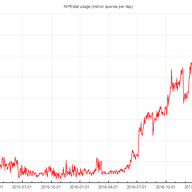
• 11 min read
Please find below the third part of our technical services update. This time we're focusing on our research activities and a number of tools we are developing.

• 11 min read
In 2013 and 2015 we provided high-level reports on the status of our plans for our technical services and tools. It is time for an update. In this first article we will focus on RIPE Atlas.

• 7 min read
We're thinking about implementing WiFi measurements in RIPE Atlas, and we want to know what you think. There are several different ways we could do this - find out more below and then take our poll to make your voice heard!
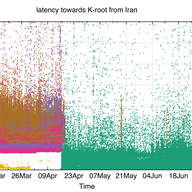
• 11 min read
Dyn Research published an article on K-root recently. Here we would like to augment the picture with data from RIPE Atlas in order to provide a more complete picture of the effect of the K-root node in Iran.
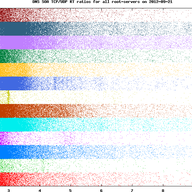
• 8 min read
We did some measurements on the round-trip (RT) values of DNS queries for SOA (Start of Authority) records from our RIPE Atlas probes, over both UDP and TCP. We plotted the TCP/UDP ratios on graphs, and found that, as expected, for the majority of the measurements, it is around 2. However, we also …
Hi Jasper, since you show interest in this area, you could check out Judy Arrays (http://judy.sourceforge.net/) for a "space horse" I guess :-)
“UX troubles I've encountered using Firefox on MacOS Catalina 10.15.7: - Without setting my browser to use the full screen, I can't set up a new measurement, as the OK button for confirming probe selection is outside the viewport, and horizontal scrolling seems not to be available. - In the "Mine" tab on the "Measurements" screen, two measurements are listed, as expected, but also the confusing message, "You do not have any measurements listed here. If you've never created a measurement of your own, create one now".”
Thank you for reporting these, we'll investigate / fix!
I wonder if the specific (and strange) amount of exactly 11 packets per target is a result of an off-by-one error, such as a "for( i=0; i<=10; i++ ) {}" loop? I think we can only speculate...
One interesting development: the city of Amsterdam, as part of the plan to go carbon neutral and detach from the gas network, is starting to experiment with using the waste heat produced in the "Science Park" (an area that has large datacenters such as Equinix's). This is planned to be used to provide heating and warm water for the surrounding neighbourhood(s). It's not easy to pull off but it's certainly an interesting approach!
“If you maintain source packages anyway, it might be worth to consider e.g. https://build.opensuse.org to provide corresponding binaries (and kind-of CI).”
Looks interesting, we'll check it out! In the meantime you can consider joining our sw probe mailing list: https://lists.ripe.net/mailman/listinfo/atlas-sw-probes
“Can existing v3 users swap their unit for a v4 probe?”
v4 is functionally the same as v3. There's no reason so swap if the probe is otherwise working.
“What if I have my own NanoPi NEO Plus2, and since you are publishing your firmware, such as https://www-static.ripe.net/static/rnd-ui/atlas/static/page/fw/ripe-atlas-fw-4790.tar.gz , can I make it work as a new probe? Is there a simple manual how to install Probe software to the Nanopi?”
While it is possible that you can replicate the steps we do when producing these probes, the amount of work we'd have to do to accommodate this would make this an expensive exercise. It is likely a better solution to join the software probe effort when it's available and use your hardware to deploy it on.
“is there any update on ipv6 support on this new generation”
As with earlier RIPE Atlas probes, the v4 probes also do IPv6. They support RAs and RDNSS out of the box, except DHCPv6. They can also be statically configured.
“With this being a simple Pi-style SBC, what's to stop someone from simply taking the probe, popping in a MicroSD card, and wiping/repurposing it for whatever? With the TP-Link models this was hard because it was reflashed firmware and the device itself wasn't very powerful or useful on its own, but it seems that with these the potential for hardware hijacking is both easier to do and more rewarding.”
We chose this device in particular because it has on-board storage as opposed to a traditional Pi where one could indeed just swap out the SD card. Although this doesn't completely rule out the possibility that some might choose to repurpose the new probes, this has always been a limitation with relying on hardware devices (one of the reasons we're keen to develop software probes). With this in mind, we take care to monitor probe activation rates in case of any drop off. So far, the v4 probes are being activated as expected.
“Please tell me that this new version supports PoE ?”
No, it does not have PoE support. We recommend using a PoE splitter in case this is an issue.
Showing 15 comment(s)